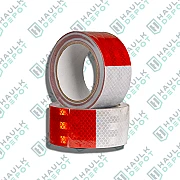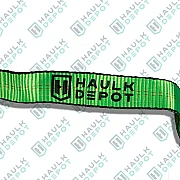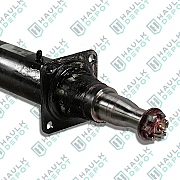Trailer parts









The Purpose of Trailer Parts in Durability, Safety and Longevity of Your Trailer
Every component of a trailer, from the frame that supports the load to the lights that guarantee safety on the roadway, contributes to a hassle-free, safe journey to the water's edge. If you own a trailer, you are likely familiar with loading and unloading your vehicle. However, have you ever stopped to think about the complex network of Trailer Parts?
We'll examine trailer components and their significance for longevity and security in this post. Understanding the requirements of your trailer and the appropriate maintenance procedures for its counterparts is essential, regardless of whether you're transporting a boat or a horse trailer.
The Introduction to Trailer Hitches and Couplers
Your trailer and the towing vehicle are connected by a hitch, which makes sure that everything is safely fastened while traveling. Ball hitches, pintle hitches, and fifth-wheel hitches are the three primary types of hitches. Ball hitches are popular; they have a ball on the towing vehicle that connects to the trailer's coupler. A sturdy connection appropriate for heavy-duty towing is provided by pintle hitches, which employ a hook and loop mechanism. Larger trailers have fifth-wheel hitches, which improve maneuverability.
The component that secures the trailer to the tow vehicle by locking the hitch onto it is called the coupler. Usually, it's found near the trailer's front. It is important to choose a hitch coupler that is the same size as the hitch ball on your trailer because they come in different sizes. For a secure connection, make sure the coupler size matches the size of the hitch ball on your trailer. Make sure the coupler you select conforms with rules and industry norms. Examine credentials that attest to adherence to safety regulations, which will provide you with comfort when driving.
The Importance of Braking System and Axles
The braking system plays a vital role in maintaining control of the trailer, especially during sharp turns, sudden stops, or when navigating through heavy traffic and adverse weather conditions like rain or snow. A reliable brake setup helps ensure safe towing and prevents excessive wear on brake pads, rotors, or drums. Keeping the system in good condition not only ensures regulatory compliance and optimal performance, but also reduces the risk of costly long-term repairs. Regular maintenance and proper adjustment are key to meeting safety standards and avoiding brake failure during operation.
Trailer axles, unlike those in powered vehicles, are not connected to engines or drivetrains. Instead, they are designed to support weight and provide smooth rolling performance. There are three main types of trailer axles commonly used:
Straight Beam Axles
Drop Axles
Torsion Axles.
Straight beam axles are mounted directly to the frame and provide even ground clearance across the trailer. Drop axles are curved downward, allowing the trailer deck to sit lower to the ground - ideal for improved loading height or stability. Torsion axles operate differently by using rubberized suspension components inside the axle housing to absorb road shocks, offering a smoother and quieter ride without the need for traditional leaf springs. Each type of axle is suited for specific trailer applications, and choosing the correct one impacts both handling and load distribution.
Efficiency with Wheels Tires and Suspension
The suspension system absorbs shocks, keeps the vehicle stable during a variety of maneuvers, and keeps the tires in contact with the road. Power and braking force are transferred to the road surface by the tires, which are the only components in contact with the ground. Your total driving experience, efficiency, and safety are all impacted by how these factors interact.
Proper alignment is essential to maintaining adequate tire performance regardless of the suspension type you select. The term "alignment" describes how the vehicle's/trailer’s suspension is adjusted. The three primary alignment parameters are caster, toe, and camber:
The angle of the wheels with respect to the vehicle's vertical axis is known as camber.
The tires may wear unevenly if your wheels are angled too much inward or outward. When seen from above, the toe is the angle at which the tires spin inward or outward.
The tires may wear out more quickly if the toe settings are off because they will scuff against the road.
The angle of the steering axis as seen from the side of the vehicle is called caster. It affects steering stability but has no direct effect on tire wear.
Poor handling, decreased fuel efficiency, and uneven tire wear are just a few of the issues that can result from improper alignment. For this reason, having your alignment checked on a regular basis is crucial, particularly after installing a new suspension system.
Safety with Lighting and Electrical Systems
An essential part of any trailer arrangement are the lights. They fulfill a number of crucial roles that are essential for both safety and legal compliance.
Lamps, wires, and connectors are components of lighting and electrical systems. In order for the trailer's lights to illuminate, the connector actually links the trailer to the vehicle's electrical system. The position lights, indicators, and tail lights on your trailer must all be operational. There are two types of trailer connectors: 7-way and 13-way. All you have to do is choose the one that fits a vehicle.
The trailer's lights have to be the same kind as the rest of the vehicle. To ensure that everything functions as intended, you should replace all of the relevant bulbs on the trailer if you choose to change the lamp model. LED lights can also be used in place of conventional bulbs. LEDs provide several benefits, including the potential for a longer lifespan than conventional bulbs.
Why Does Investing in Quality Parts Matter?
The primary justification for making sure the trailer parts utilized are of the highest caliber is safety. Heavy-duty and intricate activities are performed on trailers. Premature mechanical breakdowns brought on by shoddy, poorly constructed parts can result in ongoing repair costs as well as possible risk and danger during operations. Projects could be regularly halted by such interruptions, which would affect production and efficiency. However, high-quality trailer parts are not optional; rather, they are necessary expenditures to guarantee operation, reduce expenses, and put safety first.
Essential Trailer Maintenance Tips
It’s important to factor in your trailer’s type, size, mileage, and cargo weight to ensure it performs optimally and has a longer lifespan. These factors may mean that certain components need more frequent checks than the standard guidelines suggest.
Maintain Proper Tire Pressure:
Regularly checking and maintaining the correct tire pressure using a reliable gauge helps prevent blowouts, reduces the risk of flats, and improves fuel efficiency.
Inspect and Grease Wheel Bearings:
Performing annual inspections and re-greasing the wheel bearings as needed prevents heat buildup and ensures smooth, safe rotations.
Lubricate Hitch Components:
Using a high-quality lubricant on the hitch ball and coupler minimizes friction and protects against corrosion. If any part becomes worn or damaged, it should be promptly replaced.
Check Brake System:
Inspect trailer brakes regularly for wear, corrosion, or poor adjustment. Electric brakes should be tested with a brake controller to ensure proper function.
Test Trailer Lights and Wiring:
Ensure all lights (brake, turn, marker) are working. Check for damaged wiring or poor grounding — lighting issues are a major DOT violation risk.
Torque Lug Nuts:
Re-torque lug nuts after driving 50–100 miles on a new installation or tire change, then check regularly to avoid wheel separation.
Inspect Suspension Components:
Look for cracks on leaf springs and equalizers, worn bushings, or broken hangers. A failing suspension can cause trailer instability and tire wear.
Trailer Parts contribute to a safe and comfortable towing experience, from the suspension and lighting systems to the hitch and brakes. In addition to improving performance, proper alignment, routine maintenance, and the purchase of high-quality parts also reduce risks and the need for expensive repairs. By putting quality and regular trailer maintenance first, you're investing wisely in the effectiveness and security of your trailer. Every time you hit the road, you'll have a dependable and hassle-free trip if you give the trailer the care it needs.




































